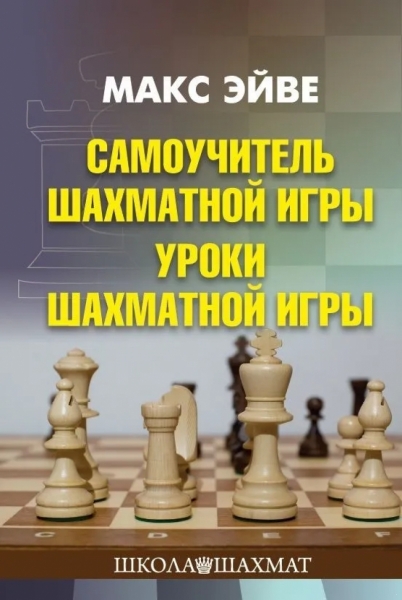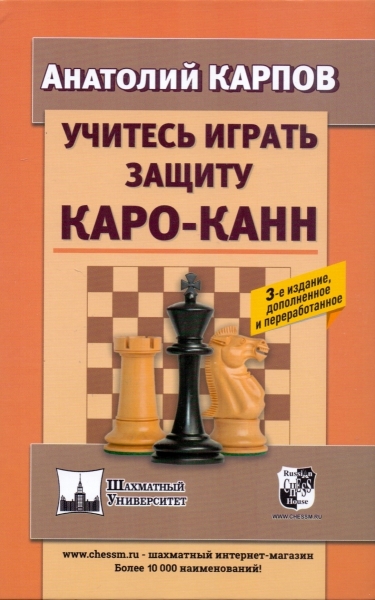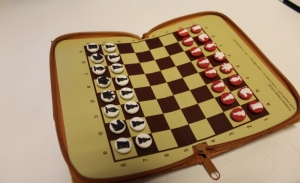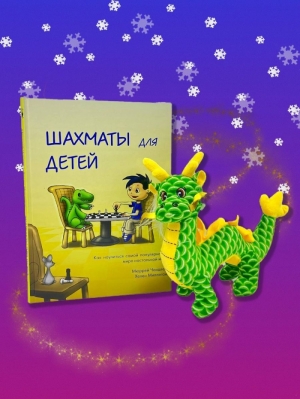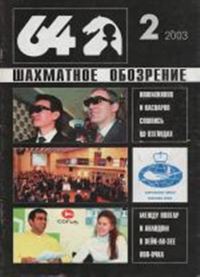PERIODICALS
-
51.82 $
Годовой комплект. 52 номера Гл.ред. Петросян За комплект в твердом переплете на 250 р. дороже
-
-
51.82 $
Annual kit. 12 rooms. Head. ed. V. Ragozin If available in hardcover, additional payment of 400 rubles. per set
-
51.82 $
Annual kit. 12 rooms. Head ed. Yu. Averbakh If available in hardcover, additional payment of 400 rubles. per set
-
51.82 $
Annual kit. 12 rooms. Head ed. Yu. Averbakh If available in hardcover, additional payment of 400 rubles. per set
-
51.82 $
Annual kit. 12 rooms. Head ed. Yu. Averbakh If available in hardcover, additional payment of 400 rubles. per set
-
51.82 $
annual set 12 rooms For a set of hardcover for 250 rubles. expensive
-
51.82 $
Yearly set Gl.red. Petrosyan 52 rooms For a set of hardcover for 250 rubles. expensive
-
51.82 $
NIC Forum Readers from all over the world join in discussions of previous surveys. Both (grand) masters and club players shed their light on new discovery and search together for the truth. With contributions by Viktor Kortchnoi, Jose Vilela, Bogdan Lalic, and many others. Sosonko & Corner Editor Genna Sosonko was leafing through his old notebooks when he came across a venomous novelty he had used in a blitz game against John van der Wiel back in 1987. This provided enough ammunition for an article on the piece sacrifice Nc3-d5 often seen in the English Opening and of course the Sicilian. The final example is by Donner, who once more had his facts wrong. Book Review The ultimate "macho" opening repertoire consists of two openings: the Sicilian Najdorf against 1.e4 and the King & s Indian against everything else. In his previous column the Najdorf came under scrutiny, so it & amp; s somehow appropriate that it & amp; s now the turn of the King & s Indian to receive special attention. Chris Ward, Joe Gallagher and Andrew Martin. Glenn Fear reviews three new KID books by English masters who he has known for longer than he & amp; d care to say: Chris Ward, Joe Gallagher and Andrew Martin. 31 NIC Surveys Yearbook 74 Sicilian Defense: Nameless Variation 5.Bd3, by Fogarasi Sicilian Defense: English Attack, by Stohl Sicilian Defense: Sozin Variation, by Tukmakov Sicilian Defense: Velimirovic Attack, by Van der Weide Sicilian Defense: Sveshnikov Variation, by Morgado Sicilian Defense: Sveshnikov Variation, by Scherbakov Sicilian Defense: Taimanov Variation, by Mortensen Sicilian Defense: Grand Prix Attack, by Scherbakov French Defense: Winawer Variation, by Nikitin Caro-Kann Defense: Pseudo-Panov Attack, by Vilela Caro-Kann Defense: Fantasy Variation, by Gavrilov Scandinavian Defense: Main Line 5 ... Bg4, by Tiviakov Petroff Defense: Jaenisch Variation, by Tzermiadianos Ruy Lopez: Chigorin Variation, by Marin Ruy Lopez: Open Variation, by Van der Tak Italian Opening: Game Canal Variation, by Jeroen Bosch King & amp; Gambit: Classical Variation, by Jensen Slav: Krause Variation, by Karolyi Slav: Botvinnik Variation, by Olthof Slav: Semi-Slav Variation, by Ehlvest Catalan: Bogo-Indian Variation, by Lalic Nimzo-Indian Defense: Sdmisch Variation, by Lukacs / Hazai Nimzo-Indian Defense: Vienna Variation, by Scherbakov Nimzo-Indian Defense: Vienna Variation, by Van der Stricht Grünfeld Indian Defense: Anti-Grundfeld Variation, by Van der Tak Grünfeld Indian Defense: Exchange Variation, by Fogarasi King & s Indian Defense: Fianchetto Variation, by Greenfeld Benoni: The Snake, by Anka Benoni: Classical Variation, by Lukacs / Hazai Queen & amp; Pawn Opening: Trompowsky Attack, by Gavrilov Dutch Defense: Leningrad Variation, by Rogozenko
-
51.82 $
NIC Forum YB / 75: Readers from all over the world join in discussions of previous surveys. Both (grand) masters and club players shed their light on new discovery. With contributions by Ruslan Scherbakov and an afterthought by Viktor Kortchnoi, who solves an intriguing riddle around a 1963 game against Matanovic! Sosonko & Corner YB / 75: In this extended column, Genna Sosonko provides us with a bird's eye view of the enormous impact that Garry Kasparov has had on opening theory. From his younger years, through his famous World Championship matches with Karpov, right to his last novelties in Linares 2005. Kasparov's ringtone theory was revolutionary. He used his computer skills. The man from Baku could beat all his rivals with his home preparation, which was an extraordinary broad mixture of modern, ancient and half-forgotten opening lines. Kasparov has stopped playing chess, but his work was able to keep top grandmasters, who can not sit still for one week as it is, busy for years. And like many of his colleagues, Sosonko does not rule out a comeback ... Book Review YB / 75: Supply and demand has motivated a proficient writer Stefan Kindermann to write his 'The Spanish Exchange Variation' in English instead of his mother tongue, as Glenn Flear explains. Admiring its clarity, Flesh regrets that this book is too thin! In Konstantin Sakaev and Semko Semkov's profound ', in the Semi-Slav: ANTI-MERAN, Flear has spotted some amazing insights. And he finds Gary Lane's 'Ideas Behind Modern Chess Openings: Black' more relevant than Lane's version for White. Who could better review 'Play the Sicilian Dragon' by Edward Dear Sergey Tiviakov? Read his expert opinion, but you should read the book first! 33 NIC Surveys Yearbook 75 Sicilian Defense: Moscow Variation 3 ... Bd7, by Boersma Sicilian Defense: English Attack 6.Be3, by L & amp; Ami / Smeets Sicilian Defense: Sozin Variation 6.Bc4, by Van der Weide Sicilian Defense: Rauzer Variation 9 ... h6, by Avrukh Sicilian Defense: Rossolimo Variation 3 ... g6, by Greenfeld Sicilian Defense: Taimanov Variation 5 ... a6, by Langeweg Sicilian Defense: Paulsen Variation 6 ... Qb6, by Fogarasi Pirc Defense: Shirov Gambit 5.g4, by Olthof Pirc Defense: Austrian Attack 6.e5, by Afek Pirc Defense: Austrian Attack 6.Bd3, by Tzermiadianos King & amp; Fianchetto: Anti-Maroczy 4 ... d6, by Marin French Defense: Rubinstein Variation 4 ... Nd7, by Fogarasi Ruy Lopez: Anti-Marshall 8.d4, by Karolyi Ruy Lopez: Breyer Variation 9 ... Nb8, by Olthof Ruy Lopez: Open Variation 9.Be3, by Van der Tak Scotch Opening: Mieses Variation 8 ... Nb6, by Van der Wiel Scotch Opening: Classical Variation 4 ... Bc5, by Panczyk / Ilczuk Two Knights Defense: 5 ... Nd5, by De Zeeuw King & amp; Gambit: Bishop & amp; Gambit 3 ... Nc6, by Narings Various Openings: English Defense 3.e4, by Stohl Various Openings: Chigorin Defense 3 ... e5, by Karolyi Queen & amp; Gambit Declined: Blackburne Variation 5.Bf4, by Karolyi Queen & amp; Gambit Declined: Anti-Tartakower Variation 8.Qc2, by Morgado Slav Defense: Chameleon Variation 4 ... a6, by Lukacs / Hazai Slav Defense: Krause Variation 6.Ne5, by Lukacs / Hazai Slav Defense: Meran Variation 8 .... Bb7, by Nikitin Nimzo-Indian Defense: Classical Variation 4 ... c5, by Anka Nimzo-Indian Defense: Classical Variation 4 ... d5, by Van der Stricht Nimzo-Indian Defense: Queen-Nimzo Hybrid 6.Nd2, by Scherbakov Bogo-Indian Defense: 4.Bd2 Qe7, by Hansen Grünfeld Indian Defense: Exchange Variation 7.Nf3, by Van der Tak King & s Indian Defense: Fianchetto Variation 3.g3, by Dautov English Opening: Double Fianchetto Variation, by Marin
-
51.82 $
NIC Forum Readers from all over the world join in discussions of previous surveys. Both (grand) masters and club players shed their light on new discovery and search together for the truth. With contributions by Boris Gelfand, Erwin l & amp; Ami, Geert van der Stricht, Edward Dearing, giving a passionate answer to Sergey Tiviakov & s negative comments on his Dragon book, and many others. Sosonko & Corner This time, Genna Sosonko has a look at 2.Qh5 and other early queen sorties in the opening. Hikaru Nakamura & s hallmark recently. Before, the young US Champion only played this in hundreds of Internet games, albeit against the best. Is this the beginning of a new trend ?, Sosonko wonders. As always, Viktor Kortchnoi gives a clear answer. Book Review Glenn Flear muses on the new phenomenon: the Chess DVD. Despite some reservations, he has to admit that Garry Kasparov (called "Mr. Kasparov", to Flear & s surprise) does win him in the beginning! An ambitious repertoire book for Black by joint authors Alburt, Dzindzichashvili, Perelshteyn and Lawrence is surprisingly comprehensive, logical and cleverly laid out. Tiger Hillarp Persson has published one more "repertoire" book, his is a very sharp one on his pet Modern Defense. A book written with the heart, as is Edward Dearing & s second baby: Challenging the Grunfeld. Reading this book, Flear immediately lost himself calculating all the topical lines ... 33 NIC Surveys Yearbook 76 Sicilian Defense: Dragon Variation, by Williams Sicilian Defense: English Attack, by Olthof Sicilian Defense: English Attack, by Greenfeld Sicilian Defense: Sveshnikov Variation, by Rodriguez / Olthof Sicilian Defense: Taimanov Variation, by Fogarasi Sicilian Defense: Alapin Variation, by Tiviakov French Defense: Advance Variation, by Sveshnikov French Defense: Advance Variation, by Gavrilov Scandinavian Defense: Gubnitsky / Pytel Variation, by Tzermiadianos Alekhine & s Defense: Larsen Variation, by Scherbakov Petroff Defense: Nimzowitsch Variation, by Skatchkov Petroff Defense: Jaenisch Variation, by Rytshagov Ruy Lopez: Closed Line with 9.d4, by Olthof Ruy Lopez: Chigorin Variation, by Galkin Ruy Lopez: Open Variation, by Flear Ruy Lopez: Dilworth Variation, by Van der Tak Scotch Opening: Miles Variation, by Afek King & amp; Pawn Opening: Elephant Gambit 2 ... d5, by Pliester King & s Pawn Opening: Two Knights Defense, by De Zeeuw Various Openings: Chigorin Defense 3 ... e5, by Karolyi Slav Defense: Alapin Variation, by Van der Stricht Slav Defense: Botvinnik Variation 9.ef6, by Lukacs / Hazai Queen & amp; Gambit Accepted: Classical Variation, by Rogozenko Catalan Opening: Open Variation, by Marin Nimzo-Indian Defense: Queen-Nimzo Hybrid, by Scherbakov Queen & s Indian Defense: Nimzowitsch Variation, by Lukacs / Hazai Grünfeld Indian Defense: Stockholm Variation, by l & amp; Ami King & s Indian Defense: Classical Variation, by Matamoros King & s Indian Defense: Fianchetto Variation, by Langeweg Benoni Defense: Modern Variation, by Greenfeld Queen & amp; Pawn Opening: Trompowsky Attack, by Anka Dutch Defense: Classical Variation, by Karolyi Rйti Opening: King & amp; Indian Attack, by Matamoros
-
51.82 $
Forum Readers from all over the world join in discussions of previous surveys. Both (grand) masters and club players shed their light on new discovery and search together for the truth. With contributions by Ian Rogers, Dorian Rogozenko, Tibor Karolyi, Geert van der Stricht and many others. Sosonko's Corner In this column, Genna Sosonko takes a look at yet another provocative theme in the opening: the 'delayed' advance of a pawn. In more lines than you would expect, this loss of a tempo that we could call the 'Arabic' method can be surprisingly effective, although the author admits that it would have left the Stars of the Past utterly amazed! '. Except Philidor, of course, who is already taught that 'excellent pawn play is a key characteristic of true craftsmanship'. However it may be, he who uses the "step by step" method. Book Review Non-theory openings are rapidly becoming theory. Glenn Flear investigates James Plaskett's The Queen's Bishop Attack Revealed and Richard Palliser's Tango !. He read the QBA, despite some deficiencies, with a smile on his face and found Tango! to be "fairly objectively analysed" and so these books may serve to popularize these still relatively unknown openings. Next, Flear compares Palliser's The Modern Benoni with Endre Vegh's Starting Out: Modern Benoni. He found quite a few differences. Our ever candid author author Sergey Tiviakov is exceptionally enthusiastic about 'What do you need? 32 NIC Surveys Yearbook 77 Sicilian Defense: Najdorf Variation 7 ... Nbd7, by Olthof Sicilian Defense: Najdorf Variation 6.Be3, by Hoeksema Sicilian Defense: Dragon Variation 9.Bc4, by Anka Sicilian Defense: Scheveningen Variation 6.Be2, by Fogarasi Sicilian Defense: Rauzer Variation 10.e5, by Van der Wiel Sicilian Defense: Rossolimo Variation 4 ... Qc7, by Greenfeld French Defense: Advance Variation 3.e5, by Sveshnikov Caro-Kann Defense: Panov Variation 5 ... Nc6, by Smeets Caro-Kann Defense: Advance Variation 4.h4, by Anka Scandinavian Defense: Main Line 5 ... Bf5, by Priй Petroff Defense: Nimzowitsch Variation 5.Nc3, by A.Kuzmin Ruy Lopez: Exchange Variation 5 ... Bg4, by Van der Tak Ruy Lopez: Neo-Steinitz Variation 6 ... Nge7, by Karolyi Ruy Lopez: Open Variation 9.Nbd2, by Grivas King's Pawn Opening: Elephant Gambit 2 ... d5, by Pliester Two Knights Defense: Fritz Variation 5 ... Nd4, by Van der Tak Queen's Gambit: Declined Exchange Variation 4.cd5, by Bosch Slav Defense: Meran Variation 7.g4, by Lukacs / Hazai Tarrasch Defense: Rubinstein Variation 6.g3, by Vilela Queen's Gambit Accepted: Classical Variation 7.a4, by Yusupov Nimzo-Indian Defense: Kmoch Variation 4.f3, by Cebalo Nimzo-Indian Defense: Romanishin Variation 4.Nf3, by Langeweg Bogo-Indian Defense: 4.Nbd2, by Boersma Queen's Indian Defense: Nimzowitsch Variation 4..Ba6, by Dautov Grünfeld Indian Defense: Exchange Variation 7.Nf3, by Avrukh Grünfeld Indian Defense: Exchange Variation 7.Nf3, by V.Mikhalevski Grünfeld Indian Defense: Exchange Variation 7.Bc4, by Olthof King's Indian Defense: Bayonet Attack 9.b4, by Tzermiadianos / Kotronias King's Indian Defense: 5.Bd3, by Geo.Timoshenko Benoni Defense: Volga Gambit 3 ... b5, by Fogarasi Old Indian Defense: Delayed Benoni 7 ... e6, by Dautov Queen's Pawn Opening: Trompowsky Attack 2.Bg5, by Fogarasi
-
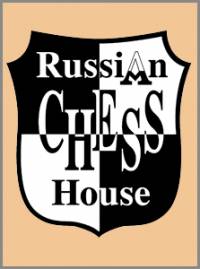 International Tournament in Bled
Author:
International Tournament in Bled
Author:
Kmoch 116.67 $ -
 Эндшпиль
Author:
Эндшпиль
Author:
Rabinovich 123.33 $ -
 The second international chess tournament Moscow 1935 (there are also rare copies on white paper + 30% to the price)
Author:
The second international chess tournament Moscow 1935 (there are also rare copies on white paper + 30% to the price)
Author:
Weinstein 166.67 $ -
 The third international chess tournament (there is also a copy without an introductory article by Krylenko at a price of minus 30%) (art. 7)
200.00 $
The third international chess tournament (there is also a copy without an introductory article by Krylenko at a price of minus 30%) (art. 7)
200.00 $
-
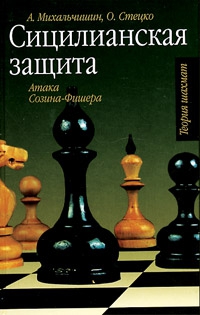 Sicilian Defense: Attack of Sozin-Fisher
Author:
Sicilian Defense: Attack of Sozin-Fisher
Author:
Mihalchishin 50.00 $ -
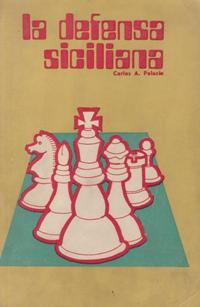 Sicilian Defense
Author:
Sicilian Defense
Author:
Palacio 25.00 $ -
 Author:
Author:
Fisher 15.00 $ -
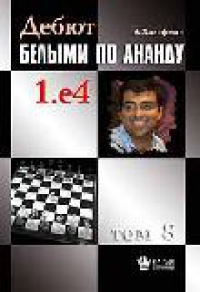 White
Author:
White
Author:
Khalifman 41.67 $ -
 White
Author:
White
Author:
Khalifman 60.00 $ -
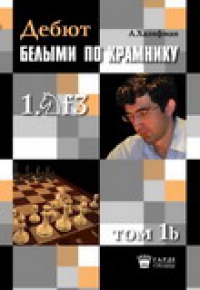 The debut is white on Kramnik (volume 1b)
Author:
The debut is white on Kramnik (volume 1b)
Author:
Khalifman 46.67 $
 Русский
Русский  Английский
Английский 

